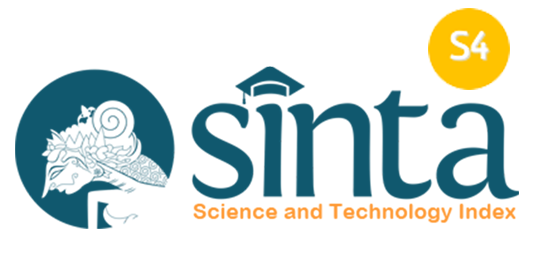The Role of Phonetic Rhythmic Methods in Developing Speech Skills in Hearing-Impaired Children
Abstract
Keywords
Full Text:
PDFReferences
Agalyasri, G. S., and Bhuvaneswari, G. (2023). Enhancing vocabulary instruction for children with speech and hearing impairments: The role of multiple sensory modalities. Theory and Practice in Language Studies, 13(10), 2429-2438.
Aisami, R. S. (2015). Learning styles and visual literacy for learning and performance. Procedia-Social and Behavioral Sciences, 176, 538-545.
Bernard, D. M. (2024). Understanding socioculturalism in early childhood education: Current perspectives and emerging trends. Interactions, 73, 16-31.
Daniel, S., Laurie, M., and Delafield-Butt, J. T. (2024). A handbook for Rhythmic Relating in autism: supporting social timing in play, learning and therapy. Frontiers in Psychology, 15, 1384068.
Daramola, F.O. (2022). Usability of assistive technologies for the learners with hearing impairment in federal college of education. Indonesian Journal of Community and Special Needs Education, 2(2), 43-50.
Farid, N., Fatima, G., and Jahanzaib, M. (2023). Identification of problems faced by children with hearing impairment in acquisition of basic skills: Exploration of possible solutions. Pakistan Languages and Humanities Review, 7(2), 790-805.
Ge, S., Wan, Q., Wang, Y., Yin, M., and Huang, Z. (2024). The combination of accent method and phonemic contrast: an innovative strategy to improve speech production on post-stroke dysarthria. Frontiers in Human Neuroscience, 17, 1298974.
González, M. M., and Hardison, D. M. (2022). Assistive design for English phonetic tools (ADEPT) in language learning. Language Learning & Technology, 26(1), 1-23.
Hidalgo, C., Falk, S., and Schön, D. (2017). Speak on time! Effects of a musical rhythmic training on children with hearing loss. Hearing Research, 351, 11-18.
Lee, B. J. (2022). Enhancing listening comprehension through kinesthetic rhythm training. RELC Journal, 53(3), 567-581.
Neumann, K., Chadha, S., Tavartkiladze, G., Bu, X., and White, K. R. (2019). Newborn and infant hearing screening facing globally growing numbers of people suffering from disabling hearing loss. International Journal of Neonatal Screening, 5(1), 7.
Pomazan, V. (2022). Rhythmic therapy for communications improvement for the hearing-impaired children. Bulletin of the Transilvania University of Braşov, Series VIII: Performing Arts, 15(2), 79-86.
Quỳnh, N.T.N. (2021). Students’ perception of speaking practice in step up English club at Ho Chi Minh City University of Technology and Education. Indonesian Journal of Educational Research and Technology, 1(3), 123-134.
Richardson, U., and Lyytinen, H. (2014). The GraphoGame method: The theoretical and methodological background of the technology-enhanced learning environment for learning to read by Ulla Richardson and Heikki Lyytinen. Human Technology, 10(1), 39-60.
Rusyani, E., Awaliah, F.A., Maryanti, R., Al Husaeni, D.F., Ragadhita, R., and Susetyo, B. (2022). The application of speaking development on the establishment of object vocabulary in student with hearing impairment. Indonesian Journal of Educational Research and Technology, 2(1), 45-56.
Solichah, N., and Fardana, N. A. (2024). Exploring multisensory programs as early literacy interventions: A scoping review. International Journal of Evaluation and Research in Education (IJERE), 13(5), 3411-3418.
Song, C., Shin, S. Y., and Shin, K. S. (2023). Optimizing foreign language learning in virtual reality: a comprehensive theoretical framework based on constructivism and cognitive load theory (VR-CCL). Applied Sciences, 13(23), 12557.
Souza-Couto, D., Bretas, R., and Aversi-Ferreira, T. A. (2023). Neuropsychology of the parietal lobe: Luria’s and contemporary conceptions. Frontiers in Neuroscience, 17, 1226226.
Usha, G. P., and Alex, J. S. R. (2023). Speech assessment tool methods for speech impaired children: A systematic literature review on the state-of-the-art in Speech impairment analysis. Tools and Applications, 82(22), 35021-35058.
Wallace, M. T., Woynaroski, T. G., and Stevenson, R. A. (2020). Multisensory integration as a window into orderly and disrupted cognition and communication. Annual Review of Psychology, 71(1), 193-219.
DOI: https://doi.org/10.17509/ajsee.v4i3.82473
Refbacks
- There are currently no refbacks.
Copyright (c) 2025 Universitas Pendidikan Indonesia

This work is licensed under a Creative Commons Attribution-ShareAlike 4.0 International License.














